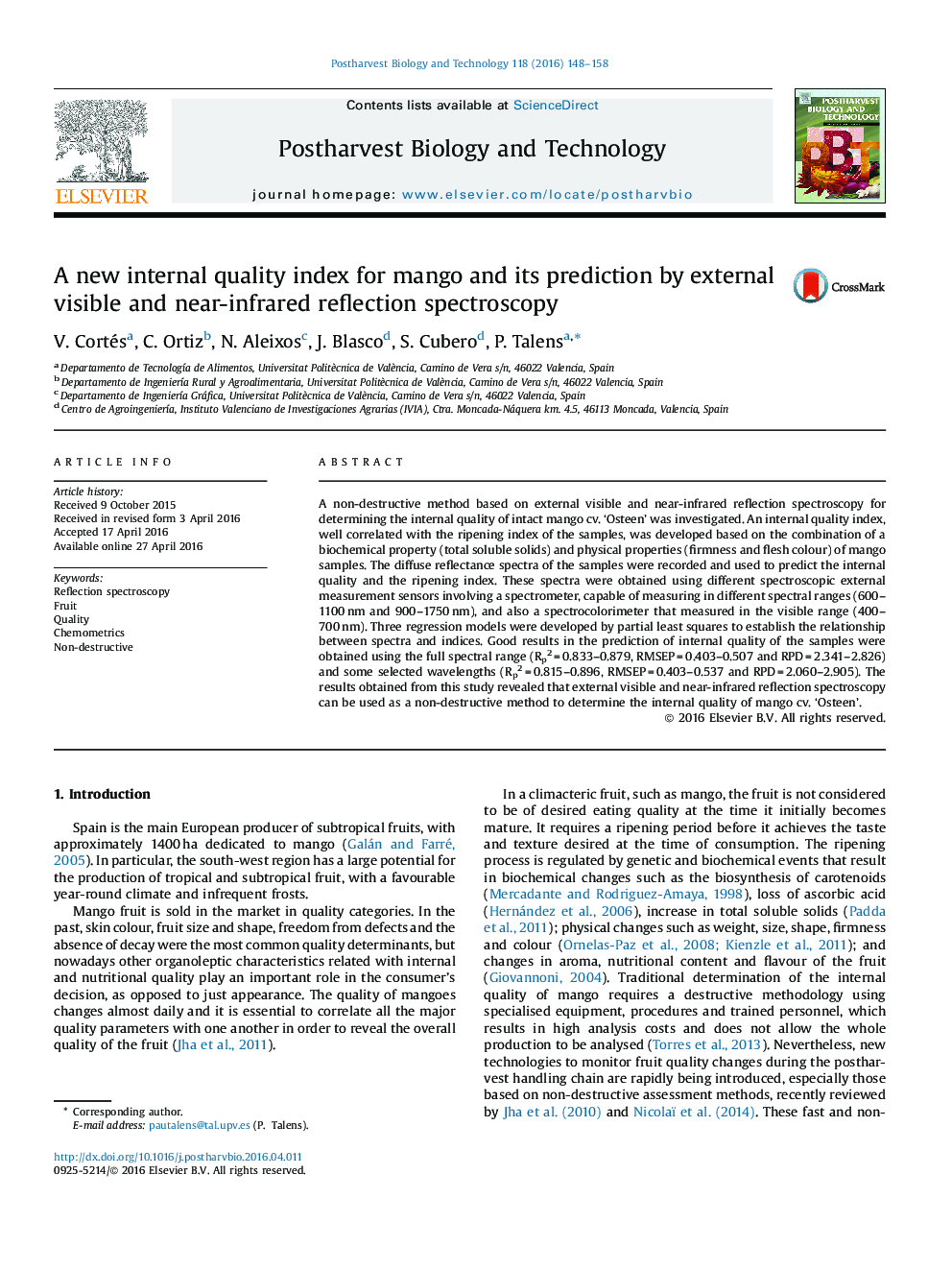| Article ID | Journal | Published Year | Pages | File Type |
|---|---|---|---|---|
| 4517802 | Postharvest Biology and Technology | 2016 | 11 Pages |
•Good internal quality assessment of Mango Osteen by spectroscopy and chemometrics.•A quality index using soluble solids, firmness and flesh colour was developed.•Different VIR-NIR instruments result in different prediction accuracies.•Method is nondestructive and may be incorporated in fruit packing lines.
A non-destructive method based on external visible and near-infrared reflection spectroscopy for determining the internal quality of intact mango cv. ‘Osteen’ was investigated. An internal quality index, well correlated with the ripening index of the samples, was developed based on the combination of a biochemical property (total soluble solids) and physical properties (firmness and flesh colour) of mango samples. The diffuse reflectance spectra of the samples were recorded and used to predict the internal quality and the ripening index. These spectra were obtained using different spectroscopic external measurement sensors involving a spectrometer, capable of measuring in different spectral ranges (600–1100 nm and 900–1750 nm), and also a spectrocolorimeter that measured in the visible range (400–700 nm). Three regression models were developed by partial least squares to establish the relationship between spectra and indices. Good results in the prediction of internal quality of the samples were obtained using the full spectral range (Rp2 = 0.833–0.879, RMSEP = 0.403–0.507 and RPD = 2.341–2.826) and some selected wavelengths (Rp2 = 0.815–0.896, RMSEP = 0.403–0.537 and RPD = 2.060–2.905). The results obtained from this study revealed that external visible and near-infrared reflection spectroscopy can be used as a non-destructive method to determine the internal quality of mango cv. ‘Osteen’.
